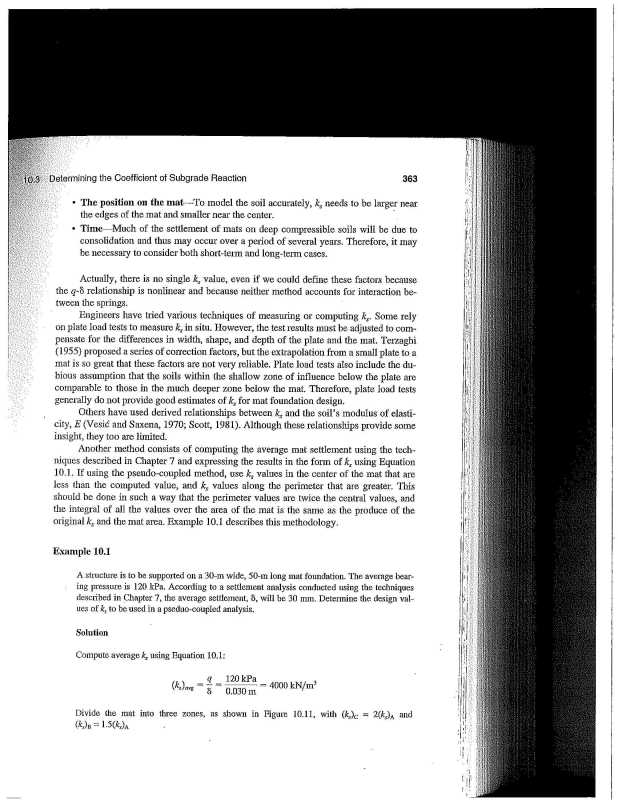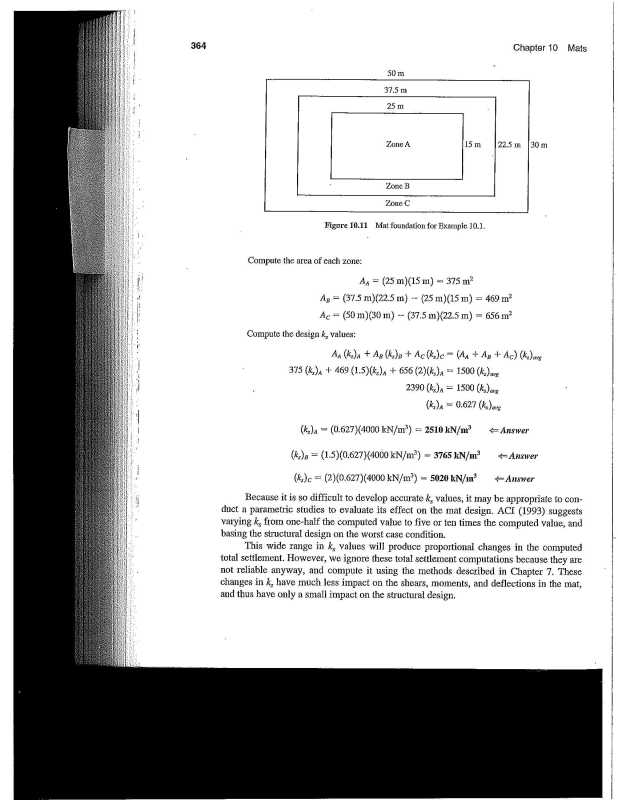ScarpShooter
Geotechnical
- Apr 9, 2015
- 14
As a geotechnical engineer, I've always been dissatisfied with the way the topic of modulus of subgrade reaction is addressed in geotechnical textbooks and figured I would look to this forum to help clarify some concepts in my mind and hopefully the minds of others.
Firstly, after reading many threads, I now understand that this parameter is a second order problem with interdependence of both the structural system and geotechnical conditions. Asking the question, what is the k-value used for, I am guessing that it is used by the structural engineer to evaluate the deformed shape and resultant stresses in a concrete slab subject to a given load. The structural can then use this value to dimension reinforcement to keep stress levels/deflections within a safe/serviceable range. I'm also guessing that this analysis is somewhat iterative as the amount of reinforcement would influence the slab's structural stiffness and deflection under load. The soil's role in the problem is that depending on how the soil deforms in response to the stress (its stiffness represented by the parameter k) a different portion of the underside of the slab will be supported and influence the reaction force acting on the bottom of the slab.
For structural mats associated with large buildings, I've never seen anything in a geotech textbook showing how to correlate soil data with k. You would think that since the k parameter involves deflection, oedometer tests could be used in some way. I then realize however that depending on the stress level, a linear constant such as k would never adequately characterize the subgrade's reaction. Additionally, depending on the size of the loaded area, there will be deeper or shallower soil strata with varying compressibility characteristics involved. Anyone who has done a settlement calc should realize that you can't just use some USCS or CBR correlation to develop a single k parameter to relate stress and deflection in this instance. In some sense, it is scary to see people on this forum and elsewhere looking to use classification data and index tests to come up with this parameter. One can only hope that they are looking for it's use in a pavement or slab on grade application. My geotech textbook (Das) and at least the classes I took, IMHO, don't do a good job discussing the important boundary conditions that make the published correlations between CBR (and other geotech parameters)applicable.
My epiphany from the other day is that I realized that the available correlation charts generally come from the pavement engineering discipline and that this is an important distinction. In pavement engineering (which for concrete is looking at fatigue) and structural concrete slab on grade (limit state) the problem is relatively narrowly defined. The problem consists of "thin" slabs and lower (compared to buildings anyway) load levels. I've seen others on this site scoff or palm/face at people asking about the k value and correlations with soil parameters, saying it is not a pure geotech parameter. My counter argument however is that given a relatively narrow range of boundary conditions, I would expect there to be a correlation between CBR or R-value and k. In pavement and slab on grade loading scenarios, the stress level in the subgrade below the depth improved by compaction and captured in a geotech parameter such as the CBR is probably relatively unimportant. Therefore, using CBR as a proxy is appropriate considering the difficulty/rarity of performing a plate load test.
If you made it this far and are still reading, any comments refuting or confirming my statements based on your own experience would be much appreciated. I'd also love to know anything about a fundamental approach that could be used to evaluate the appropriate k-value for a large mat foundation.
Firstly, after reading many threads, I now understand that this parameter is a second order problem with interdependence of both the structural system and geotechnical conditions. Asking the question, what is the k-value used for, I am guessing that it is used by the structural engineer to evaluate the deformed shape and resultant stresses in a concrete slab subject to a given load. The structural can then use this value to dimension reinforcement to keep stress levels/deflections within a safe/serviceable range. I'm also guessing that this analysis is somewhat iterative as the amount of reinforcement would influence the slab's structural stiffness and deflection under load. The soil's role in the problem is that depending on how the soil deforms in response to the stress (its stiffness represented by the parameter k) a different portion of the underside of the slab will be supported and influence the reaction force acting on the bottom of the slab.
For structural mats associated with large buildings, I've never seen anything in a geotech textbook showing how to correlate soil data with k. You would think that since the k parameter involves deflection, oedometer tests could be used in some way. I then realize however that depending on the stress level, a linear constant such as k would never adequately characterize the subgrade's reaction. Additionally, depending on the size of the loaded area, there will be deeper or shallower soil strata with varying compressibility characteristics involved. Anyone who has done a settlement calc should realize that you can't just use some USCS or CBR correlation to develop a single k parameter to relate stress and deflection in this instance. In some sense, it is scary to see people on this forum and elsewhere looking to use classification data and index tests to come up with this parameter. One can only hope that they are looking for it's use in a pavement or slab on grade application. My geotech textbook (Das) and at least the classes I took, IMHO, don't do a good job discussing the important boundary conditions that make the published correlations between CBR (and other geotech parameters)applicable.
My epiphany from the other day is that I realized that the available correlation charts generally come from the pavement engineering discipline and that this is an important distinction. In pavement engineering (which for concrete is looking at fatigue) and structural concrete slab on grade (limit state) the problem is relatively narrowly defined. The problem consists of "thin" slabs and lower (compared to buildings anyway) load levels. I've seen others on this site scoff or palm/face at people asking about the k value and correlations with soil parameters, saying it is not a pure geotech parameter. My counter argument however is that given a relatively narrow range of boundary conditions, I would expect there to be a correlation between CBR or R-value and k. In pavement and slab on grade loading scenarios, the stress level in the subgrade below the depth improved by compaction and captured in a geotech parameter such as the CBR is probably relatively unimportant. Therefore, using CBR as a proxy is appropriate considering the difficulty/rarity of performing a plate load test.
If you made it this far and are still reading, any comments refuting or confirming my statements based on your own experience would be much appreciated. I'd also love to know anything about a fundamental approach that could be used to evaluate the appropriate k-value for a large mat foundation.


